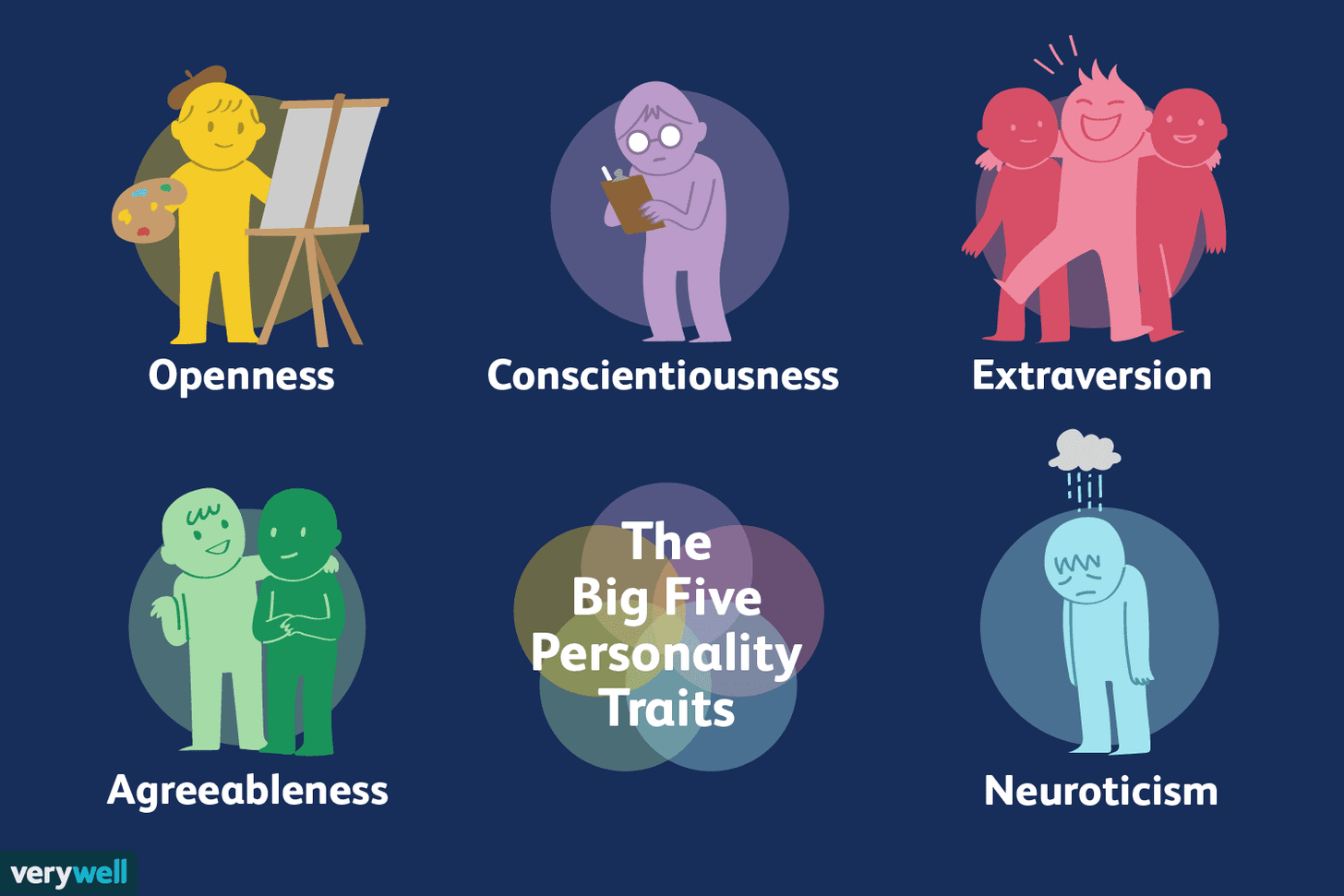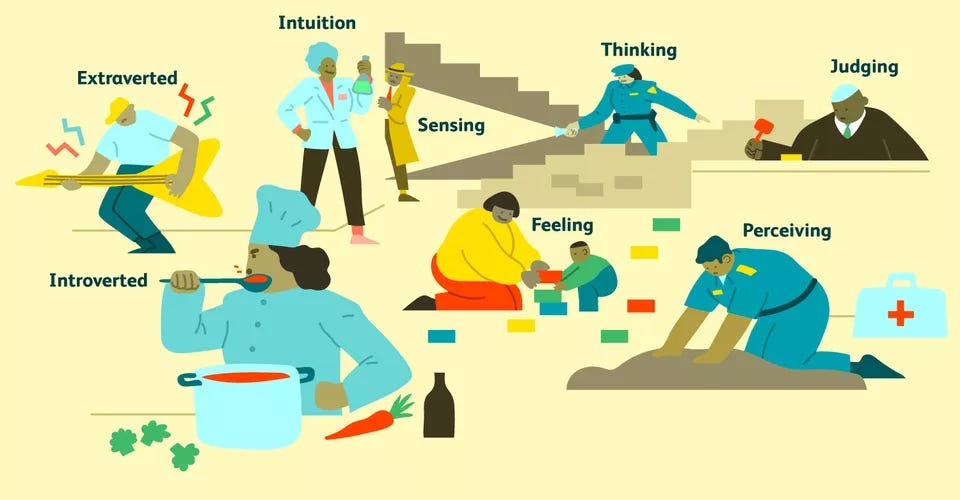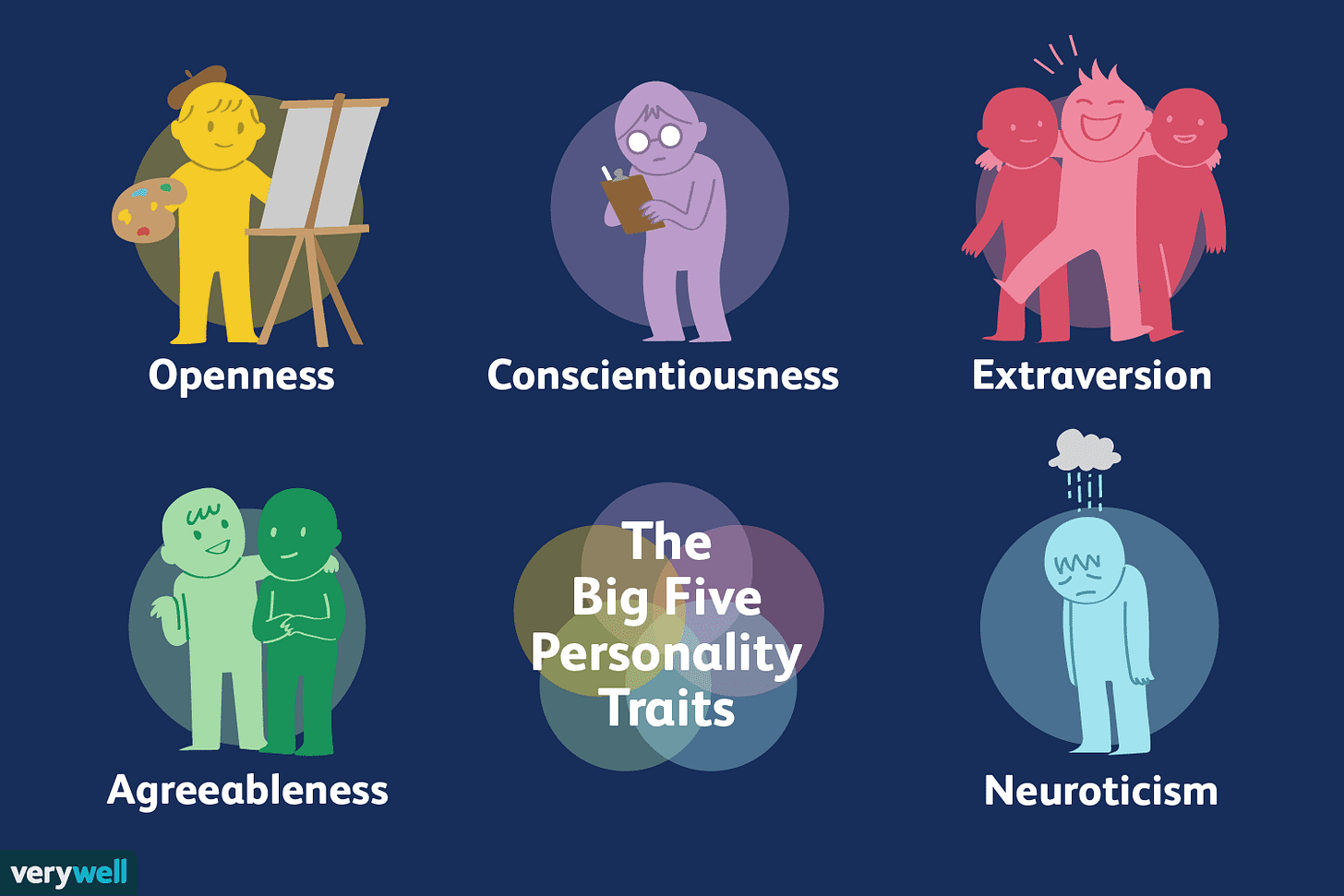On the psychology of personality types
Why the Myers-Briggs personality test has such widespread appeal, how it compares to astrology signs, and why we might never settle on a unified theory of personality

It’s funny to think back to this, but personality theory was the initial spark that got me interested in psychology and neuroscience.
I went to a nerdy high school, and so it was completely natural that a classmate was reading about Carl Jung under his desk during math class. I ended up buying the book myself and spending the next few years obsessing over his ideas.
What is the MBTI test?
For the purposes of this discussion, Carl Jung was a 20th century psychiatrist that laid the groundwork for what would become a popular personality test, the Myers-Briggs Type Indicator (MBTI). Here’s a quick overview:
Personality preference is measured along four dichotomies: Extraversion / Introversion, Sensing / Intuition, Thinking / Feeling, and Judging / Perceiving. Combinations of these scales produce a four-letter acronym (e.g. INFJ, ESTP) that reflects the dominant score on each factor. — ScienceDirect

Back to the story, learning about personality theory as a 16-year-old gave me a new way of thinking about the world and the people in it. I developed the annoying habit of trying to guess the MBTI types of all my friends. It’s definitely cringey to look back on those days, but they were also formative experiences for me.
It was the first time I really thought about who I was, who the people around me were, and how that influenced our interactions.
—
Problems with the MBTI test
It was only later that I discovered all the problems with the MBTI types:
- poor validity — it’s not predictive of future behavior or attitudes
- poor reliability — the results are sometimes inconsistent between tests
- not independent — the dimensions are correlated with each other
- not comprehensive — it omits predictive traits like neuroticism
The MBTI test is also confounded by the fact that it asks you what you believe about yourself, which may or may not align with your actual behavior in real life. It’s really hard to avoid giving socially desirable or idealized answers to the questions.
Beyond that, the descriptions of the types are crafted to be simultaneously generic, yet specific enough that you think you are being directly addressed. This is why the test results seem so true when you read them.
MBTI tests have barely more scientific validity than astrology signs do.
But what’s the harm in believing?
That being said, both MBTI tests and astrology signs give people insights about themselves and others, in a way that’s approachable and comforting.
They are entry points for reflection, acting as shortcuts for having conversations about who we are and how we relate to each other.
The meteoric rise of social astrology apps likes Co-Star is a testament to this. Banu Guler, the app’s founder, believes that astrology has stuck around for 2,500 years because it’s remarkably good at helping people talk about their reality.

To be more specific, MBTI indicators and astrology signs provide a shared vocabulary for explaining yourself and understanding others.
“If you tell me that you’re an introvert, I know exactly what that means or I think I know exactly what that means and I think I know you. All of a sudden, you have a place in my social worldview, the same way you might have a place in your own social worldview if you know that you are a feeler and you know that other people prefer thinking.” — Merve Emre
This creates a sense of social belonging and comfort, in that there are many people with the same sign/type as you, going through the same type of struggles as you are.
I would argue that personality types and astrology signs, despite having little to no scientific basis, have fairly positive effects as long as you don’t take it too seriously.
Alternatives to the MBTI test
Although it’s not problematic on an individual level, the lack of scientific validity starts to be concerning when 80% of Fortune 500 companies give personality tests to their employees and potentially make decisions based on the results.
It begs the question: is there an empirical way to derive personality dimensions?
The research that most psychologists hold up as the best attempt is the Five Factor theory, which emerged from several large-scale studies across different cultures. This construct features 5 core dimensions, in contrast to the MBTI’s 4 dimensions.

Unlike MBTI, where each personality type has unique and constructive strengths, the Five Factor model features traits where one side of the spectrum has undeniably negative associations.
For instance, the neuroticism dimension contrasts emotional stability with feelings of impulsivity, anxiety, and nervousness. This makes it much less appealing to organizations from a marketing perspective.
Even if the Five Factor model were more marketable (which might come at the cost of scientific accuracy), it raises bigger questions about personality typing.
Are these even the categories that we should be using to think about humans?
Who’s to say that 5 is the appropriate amount of dimensions? In fact, there is evidence for a six-factor HEXACO model that adds a honesty-humility dimension. Why stop there though? There’s also a 16 Personality Factor Questionnaire (16PF).
Maybe it’s wrong to use dichotomies and hierarchies at all. There are alternative approaches where relationships between traits are envisioned as a circle or in even more abstract graph structures (link if you're curious).
I don’t know if we’ll ever settle on a single way to make sense of personality, and that’s OK as long as people have rich language to understand both themselves and others.
Friday Brainstorm Newsletter
For more, join 300+ curious people subscribed to the Friday Brainstorm newsletter. It’s one email a month with the most interesting ideas I've found related to science and health.